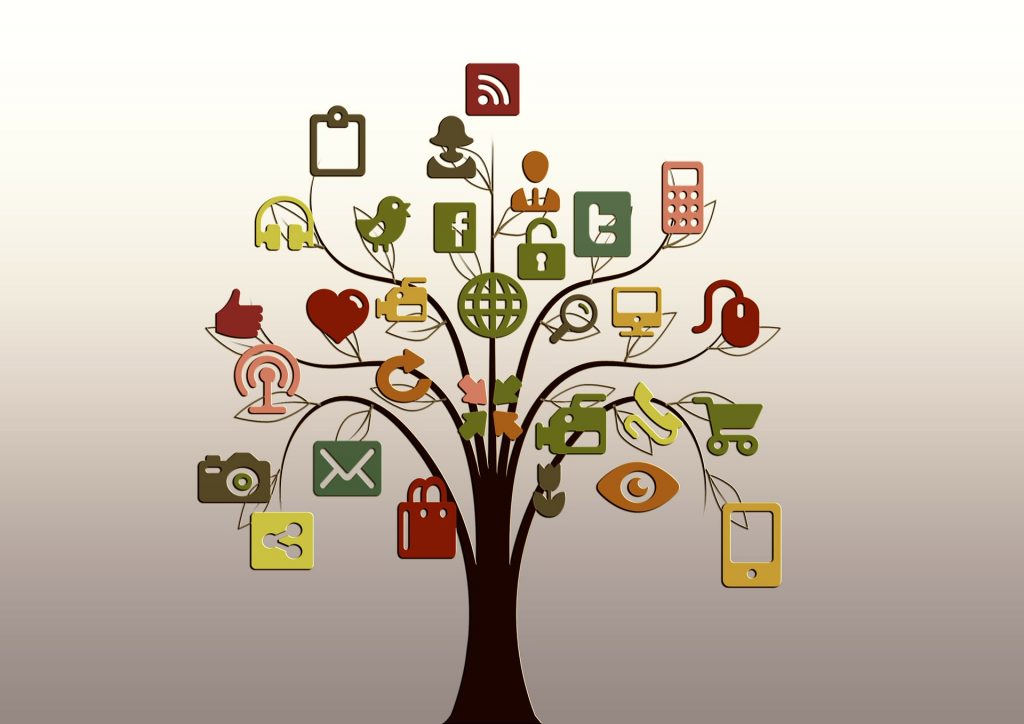
Healthcare is nothing if not constantly changing.
Incredible technological innovations are revolutionizing the way we prevent, diagnose, and treat illnesses. Wearable devices are empowering us to take control of our wellness like never before. Tools like mobile apps and social media platforms are changing how patients and brands connect.
How will healthcare marketers respond to these upheavals in 2018?
Here are five key trends to watch out for:

Image credit: mohamed_hassan
1. The “Retailification” of Healthcare
Online resources empower us to take our health into our own hands. Instead of wondering what might be wrong with us, we’re scouring content on WebMD or other trusted sources like Mayo Clinic.
A staggering 80 percent of internet users have searched for a health-related topic online. Bottom line: we are engaging healthcare providers much later in the process.
People have taken the techniques they’ve learned when dealing with retailers–comparison shopping, research, and reading reviews–and started applying them in the healthcare context.
Throw in plenty of uncertainty about insurance laws and rising costs, and a lot of people have switched to high-deductible health plans (HDHPs).
Expectations have changed. More money is coming out of pocket. Healthcare-seekers are very conscious about the value they’re getting–and opportunities to save whenever possible.
We might not be able to tweak insurance laws or lower premiums. But as marketers, we can make this process less overwhelming. We can educate people with the key information, give them the features (reviews, price comparisons, etc.) they’re used to from retail, and create tools that help them decide how to move forward.

Image credit: geralt
With the “retailification” of healthcare comes increased importance of social engagement.
Healthcare-seekers used to have to rely on word of mouth or people they knew personally. Now, they’re turning to review sites, provider directories, and social networks.
We marketers can’t afford to underestimate just how important these recommendations are. Over 40 percent of people viewing health-related information on social media see reviews from other users.
The only guarantee?
People will talk about you on review sites and social media. But it’s up to you to decide whether to let conversations happen passively–or get proactive about your presence on these platforms.
Doing business with brands like Netflix and Spotify have shown people what is possible. Their expectations have increased. They demand convenience, fast support, and an experience that places them first.
Expectations are higher, but there are also opportunities to create virtual healthcare communities. In an increasingly impersonal world, we can help patients find others in similar situations and provide education and support.
The savviest social media is a dialog, not a one-way broadcast. Marketers can answer questions. Asking them can be even more powerful. What are people struggling with? What’s on their minds? These responses help you understand your community’s language, what motivates them, and makes them feel valued.

Image credit: badalyanrazmik
The shift to value-based healthcare models has been ongoing for a few years, but we expect it will come to the forefront in 2018. It’s truly gathering momentum!
Value-based models have already shown a ton of promise in lowering costs and helping patients get the healthcare they need. This shakeup, a dramatic change from volume-based models, also creates opportunities to improve your marketing.
Value-based models focus on the quality (not quantity) of interactions. They’re obsessively focused on outcomes: did the patient’s life improve? This is great for patients, who can start to feel valued as people instead of simply itemized lists of services provided.
Most patients are so used to the volume-based model that they can’t imagine anything different. This is a perfect opportunity for marketers to showcase these new possibilities. As brands shift their models, it’s up to you to explain this in simple terms–as well as the benefits.
How can you demonstrate the value of value-based care? By turning to patients whose lives you’ve already helped improve. It might be featuring their stories on your website, making videos with them and their family members to share on social media, or something else.

Image credit: nightowl
Healthcare is also experiencing a massive broadening in scope. Thanks to 24/7, at-your-fingertips connectivity, it’s never been easier to engage patients before they seek healthcare–or well after they have.
Before, during, and after healthcare are all opportunities to add value to patients’ lives and show them that we appreciate them as more than just dollars and cents.
Imagine the traditional approach someone might take when they think they have a health issue. If they have a regular provider, they probably just go there. If they don’t, they look up providers in their network and pick one. They go in, get treated, maybe a prescription, and that’s that.
Today, we can do so much more. We can use content (blog, social media posts, videos, etc.) to give wellness and prevention tips. If people are unsure if they’re ill, we can help them with a list of common symptoms. After patients are treated, we could create a mobile app that reminds them to take their medication and automatically schedules a follow-up.
The result?
Deeper relationships with patients. Increased retention and trust.

Image credit: Ramdlon
If something looks or sounds like promotional material, we are becoming better and better at tuning it out. There are too many things competing for our attention. Besides, it looks like countless other marketing messages.
But stories?
Those grab our attention. They affect us on an emotional level.
This is the “heart” part of our engaging head and heart philosophy here at Bloom. Unfortunately, it’s also a part that many healthcare brands overlook.
Think about how many opportunities you have to tell compelling stories today. You hear them from patients and their families all the time. Or maybe it’s from the providers who serve them. What inspires them? What motivates them to get up every morning and do what they do? There are also so many innovations in medical technology happening that it’s hard to keep up.
It no longer takes a huge budget to get these stories out either, whether it’s on social media, a blog or YouTube video.
All of that is great news for marketers. By presenting patients as the hero, they give their audiences someone to relate to. It’s that type of messaging that resonates–even when we’re drowning in information overload.
Moving Forward
Healthcare trends are always changing, but the fundamentals of solid marketing are constant. Engaging people emotionally, educating and inspiring them to live healthier, and building communities are always in style.
Patient expectations have never been higher. Fortunately, an abundance of digital tools can help you make the most of the latest trends while laying a solid foundation to support them.
